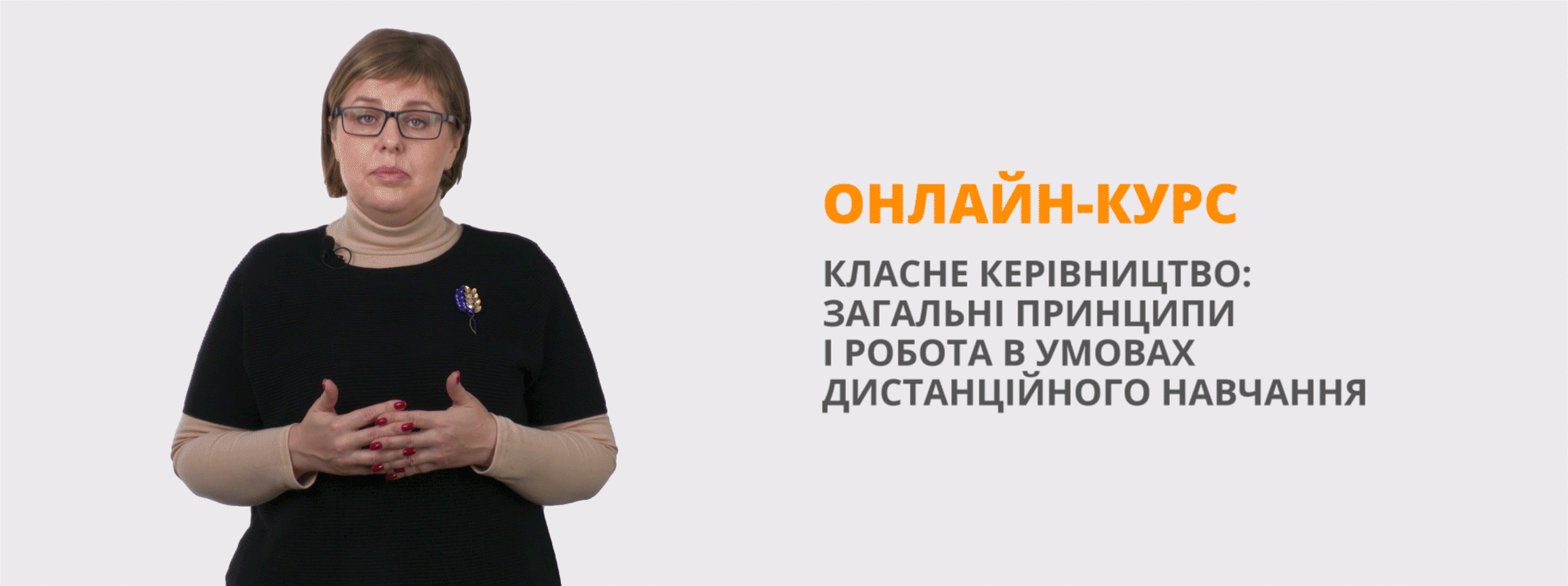Проектна робота "Роль жінки в суспільстві" з використанням комп’ютерних технологій як засобу креативного та інтерактивного навчання у 11 класі
Життя постійно підштовхує нас, учителів іноземних мов, до активнішого використання сучасних комп'ютерних технологій.
Рухаючись у напрямку сучасної освіти, розробляю. комп'ютерно-орієнтовані уроки на різних етапах навчання, використовуючи педагогічні програмні засоби навчального призначення. В основі таких уроків лежить робота з програмами з пакету Microsoft Office, а саме: PowerPoint, Publisher, Word, які дозволяють розширити можливості навчального процесу, використовуючи комп'ютер для спілкування, проведення досліджень, створення публікації, презентацій, пошуку додаткової інформації через Інтернет. Для визначення рівня сформованості умінь та навичок іншомовного спілкування учні 11 класу нашої школи мають можливість працювати з тестами у електронній версії. Зміст тестових завдань передбачає здійснення контролю та самоконтролю рівня сформованості в учнів умінь та навичок усіх видів мовленнєвої діяльності.
Спрямовуючи навчально-виховний процес на розвиток творчої особистості, докладаю усіх зусиль, щоб вдосконалити свою професійну діяльність та розвивати творчі можливості своїх учнів.
Життя постійно підштовхує нас, учителів іноземних мов, до активнішого використання сучасних комп’ютерних технологій.
Рухаючись у напрямку сучасної освіти, розробляю. комп'ютерно-орієнтовані уроки на різних етапах навчання, використовуючи педагогічні програмні засоби навчального призначення. В основі таких уроків лежить робота з програмами з пакету Microsoft Office, а саме: PowerPoint, Publisher, Word, які дозволяють розширити можливості навчального процесу, використовуючи комп'ютер для спілкування, проведення досліджень, створення публікації, презентацій, пошуку додаткової інформації через Інтернет. Для визначення рівня сформованості умінь та навичок іншомовного спілкування учні 11 класу нашої школи мають можливість працювати з тестами у електронній версії. Зміст тестових завдань передбачає здійснення контролю та самоконтролю рівня сформованості в учнів умінь та навичок усіх видів мовленнєвої діяльності.
Спрямовуючи навчально-виховний процес на розвиток творчої особистості, докладаю усіх зусиль, щоб вдосконалити свою професійну діяльність та розвивати творчі можливості своїх учнів.
Проектна робота з використанням комп’ютерних технологій як засобу креативного та інтерактивного навчання у 11 класі за підручником Л.В.Калініна, І.В.Самойлюкевич.
ОПИС ПРОЕКТУ
Тема проекту: «The role of a Woman in Society ».
Ключове питання: Якою повинна бути жінка?
Тематичні питання:
1. Чи знаєте ви відомих жінок світу?
2. Який внесок відомі жінки зробили для суспільства?
3. Який вклад українських жінок для сучасного суспільства?
4. Що ви знаєте про відомих жінок рідного краю?
Змістові питання:
1.Основні факти про відомих жінок світу.
2.Основні факти про відомих українських жінок.
3.Основні факти про відомих жінок Кіровоградщини.
Цілі проекту:
- навчити створювати презентацію, публікацію;
- формувати усвідомлення важливості розуміти те, що чуєш;
- формувати вміння стисло, чітко представляти результати досліджень;
- розвивати вміння ілюструвати ідеї, думки, висновки; виховувати дружнє ставлення один до одного;
Стислий опис
Працюючи з проектом, учні самостійно знаходять інформацію про відомих жінок світу, України, рідного селища.
Учням пропонується оформлювати свої знахідки в письмовій формі. Діти вчаться самостійно знаходити цікаву інформацію з теми, для цього вони користуються Інтернетом, різними виданнями періодики.
Навчальні предмети: англійська мова, література, музика, інформатика.
Вхідні знання та навички:
- основні факти про відомих жінок;
- основні граматичні часові форми дієслова, умовні речення;
- знання орфографії;
- знання лексичних одиниць з теми;
- вміння користуватися додатковою та енциклопедичною літературою;
ПЛАН РЕАЛІЗАЦІЇ ПРОЕКТУ
Крок 1
Перед початком роботи учні обговорюють обрану тему та проводять анкетування учнів різних класів з метою визначення доцільності створення проекту. На першому етапі виготовлення презентації я пропоную учням скласти план. Потім надрукувати необхідний текстовий матеріал в програмі Word, підібрати необхідний ілюстративний матеріал з електронних енциклопедій та мережі Internet, відсканувати малюнки чи фотографії або зробити необхідні фотознімки цифровою камерою і перенести їх у комп'ютер.
Крок 2
Учні створюють презентації. Вони, знайшовши додаткову цікаву інформацію, обговорюють доцільність використання саме цього матеріалу. Намагаються переконати інших учнів своїм прикладом у важливості зібраної інформації .Учні працюють над дизайном слайдів, варіантами структури слайда — макетами (титульного слайда, слайдів, які містять лише текст або лише зображення, текст і зображення, відео і діаграми, мультимедійні елементи, звук); кольоровим оформленням слайда (фону і тексту); настройкою анімації (ефектами, якими будуть супроводжуватись тексти і графіка); налагодженням системи навігації або керуванням презентацією.
Крок З
Наступним кроком необхідно запам'ятати створену презентацію і записати її на компакт-диск.
Учні створюють публікації , розробляють макет видання, аналізують обрані матеріали, пропонують іншим учням ознайомитися з цікавими фактами про відомих жінок світу, України, рідного селища та їхній вклад в суспільство.
Крок 4
Учні представляють свої презентації : 1- про відомих жінок світу, 2- про відомих жінок України, 3- про знаменитих жінок Кіровоградщини та рідного селища. Закінчивши свої Презентації, учні діляться своїми враженнями.
Крок 5
Потім учні оцінюють свої Презентації та Презентації своїх однокласників .
Evaluation Card
Write: Speaker 1 Speaker 2 Speaker 3 Speaker 4 Speaker 5 Speaker 6 Speaker 7
- If the title is suitable:____________________________________________________________________________________________________________________________________________
- If the presentation is good:_____________________________________________________________________
_________________________________________________________________________
- If you agree with the speaker'schoice:_________________________________________________________________________________________________________________________________________
___________________________________________________________________________
Учні отримують оцінку за виконані види роботи та загальну оцінку.
Початком роботи над проектами було анкетування учнів , яким були поставлені питання:
1 (Додаток 1) Учням 10 класу – «What famous women of the world do you know?»
2 (Додаток 2) Учням 11 класів – «What famous women of Ukraine do you know? »
3 (Додаток 3) Учням 9 класу – «What famous women of Kirovograd region do you know? »
4 (Додаток 4) Учням 9-11 класів - «What famous women of Olexandrivka do you know? »
(Анкети у додатках).Результати анкетування були проаналізовані та взяті до уваги при підготовці до презентації:
(Додаток 1)

Top 100 Famous Women
A list of the most famous women from around the world.
 1. Princess Diana (1961 – 1997) – Princess of Wales, married to Prince Charles. Later divorced. Known for her humanitarian and charity work.
1. Princess Diana (1961 – 1997) – Princess of Wales, married to Prince Charles. Later divorced. Known for her humanitarian and charity work.
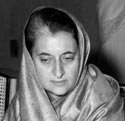 2. Indira Gandhi (1917-1984) – Third Prime Minister of India 1966-77 and 1980-84. Influential in shaping post-war India constitution and society.
2. Indira Gandhi (1917-1984) – Third Prime Minister of India 1966-77 and 1980-84. Influential in shaping post-war India constitution and society.
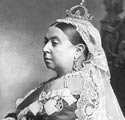 3. Queen Victoria (1819-1901) – Queen of Great Britain during nineteenth century. Oversaw dramatic rise in prominence of Great Britain and her Empire.
3. Queen Victoria (1819-1901) – Queen of Great Britain during nineteenth century. Oversaw dramatic rise in prominence of Great Britain and her Empire.
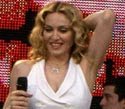 4. Madonna (1958 – ) American singer and songwriter. Often noted for controversial lyrics and activities. Best selling female artist of all time.
4. Madonna (1958 – ) American singer and songwriter. Often noted for controversial lyrics and activities. Best selling female artist of all time.
5. Cleopatra (69 -30 BC) – Last Pharaoh of ancient Egypt. Had 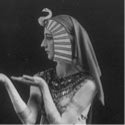 relationship with Roman rulers, Julius Caesar and Mark Anthony.
relationship with Roman rulers, Julius Caesar and Mark Anthony.
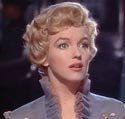 6. Marilyn Monroe (1926-1962) – Actress, model and icon of post war America.
6. Marilyn Monroe (1926-1962) – Actress, model and icon of post war America.
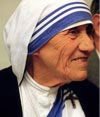 7. Mother Teresa (1910-1997) – Nun and charity worker. Mother Teresa dedicated life to serving poor and disadvantaged.
7. Mother Teresa (1910-1997) – Nun and charity worker. Mother Teresa dedicated life to serving poor and disadvantaged.
 8. Hilary Clinton (1947 – ) US Secretary of State 2009-2013. First lady during Bill Clinton’s presidency and democratic candidate for President in 2008.
8. Hilary Clinton (1947 – ) US Secretary of State 2009-2013. First lady during Bill Clinton’s presidency and democratic candidate for President in 2008.
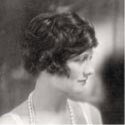
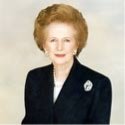 9. Coco Chanel (1883-1971) – fashion designer and founder of fashion label Chanel. Influential in 1920s for setting new fashion trends which broke with previous styles.
9. Coco Chanel (1883-1971) – fashion designer and founder of fashion label Chanel. Influential in 1920s for setting new fashion trends which broke with previous styles.
10. Mrs Thatcher (1925-2013) – British Prime Minister during the 1980s. Known for her strong, controversial leadership style.
11. Angela Merkel (1954 – ) Merkel has been chancellor of Germany since 2005 and the de facto leader of the European 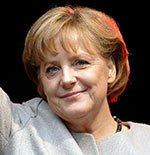 Union during financial crisis.
Union during financial crisis.
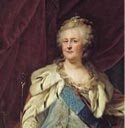 12. Catherine the Great (1729-1796) – Queen of Russia who brought in reforms to improve welfare of serfs.
12. Catherine the Great (1729-1796) – Queen of Russia who brought in reforms to improve welfare of serfs.
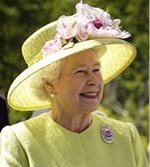 13. Queen Elizabeth II (1926 – ) The second longest serving British monarch from 1953.
13. Queen Elizabeth II (1926 – ) The second longest serving British monarch from 1953.
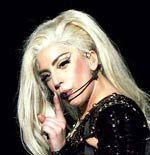
14. Lady Gaga (1986-) American singer, songwriter, activist, actress, and fashion designer. Known for her flamboyant stage performances.
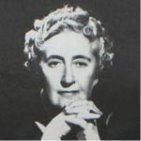 15. Agatha Christie (1890 – 1976) Best selling crime fiction author, created Poirot and Miss Marple detective series.
15. Agatha Christie (1890 – 1976) Best selling crime fiction author, created Poirot and Miss Marple detective series.
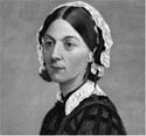 16. Florence Nightingale (1820 – 1910) British nurse (born in Italy) who helped improve standards of hospitals and nursing during Crimean War.
16. Florence Nightingale (1820 – 1910) British nurse (born in Italy) who helped improve standards of hospitals and nursing during Crimean War.
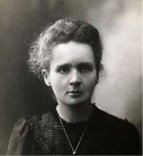 17. Marie Curie (1867 – 1934) Polish physicist and chemist. First women to win Nobel Prize in both Chemistry and Physics.
17. Marie Curie (1867 – 1934) Polish physicist and chemist. First women to win Nobel Prize in both Chemistry and Physics.
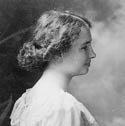 18. Helen Keller (1880-1968) – At the age of 19 months Helen became deaf and blind. Overcoming the frustration of losing both sight and hearing she campaigned tirelessly on behalf of deaf and blind people.
18. Helen Keller (1880-1968) – At the age of 19 months Helen became deaf and blind. Overcoming the frustration of losing both sight and hearing she campaigned tirelessly on behalf of deaf and blind people.
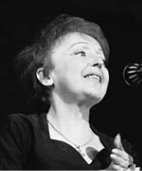 19. Édith Piaf (1915 – – 1963), Singer widely regarded as France’s national diva. Famous songs include “La Vie en rose” (1946), “Non, je ne regrette rien” (1960)
19. Édith Piaf (1915 – – 1963), Singer widely regarded as France’s national diva. Famous songs include “La Vie en rose” (1946), “Non, je ne regrette rien” (1960)
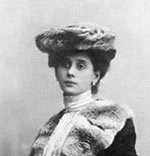 20. Anna Pavlova (1881-1931) Russian ballet dancer, who set up her own touring ballet company and invented ‘The Dying Swan’
20. Anna Pavlova (1881-1931) Russian ballet dancer, who set up her own touring ballet company and invented ‘The Dying Swan’
(Анкети у додатках).Результати анкетування були проаналізовані та взяті до уваги при підготовці до презентації:
(Додаток 2)

(Анкети у додатках).Результати анкетування були проаналізовані та взяті до уваги при підготовці до презентації:
I am Ukrainian girl, but I would like to know by myself who is the best of us, at least according to the respectable sources such as Wikipedia.
So, I made my top 12 of most famous Ukrainian women. I put to this list not only women which were born in Ukraine, but women of Ukrainian descent too, do not matter where they were born.
Ani Lorak
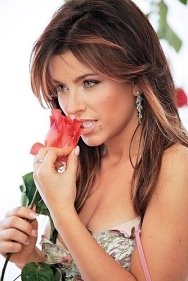
Ani Lorak is a very popular Ukrainian pop-singer. She was born in 1978 and she is originally from the town of Kitsman (Chernivtsi region, Western Ukraine). The most known achievement of Ani is a second place at 2008 Eurovision Song Contest in Belgrade (Serbia).
Here is a video of Ani Lorak, she is performing a song “Shady Lady” at 2008 Eurovision Song Contest.
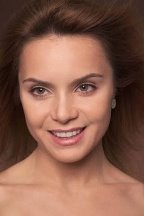 Dasha Astafieva is a Ukrainian model and member of pop-band NikitA. Dasha was born in 1985 in Ordzhonikidze city (Dnipropetrovsk region, Central Ukraine). Dasha Astafieva was selected to be Playboy's January 2009 Playmate of the Month. She is the Playmate of the 55th Anniversary of Playboy.
Dasha Astafieva is a Ukrainian model and member of pop-band NikitA. Dasha was born in 1985 in Ordzhonikidze city (Dnipropetrovsk region, Central Ukraine). Dasha Astafieva was selected to be Playboy's January 2009 Playmate of the Month. She is the Playmate of the 55th Anniversary of Playboy.
Lilia Podkopaeva
Lilia Podkopayeva is a former Ukrainian artistic gymnast. She was born in a city of Donetsk (Eastern Ukraine). Lilia Podkopaeva is Olympic champion of artistic gymnastics of 1996 Atlanta Olympics and winner of the 1995 World Artistic Gymnastics Championships in Sabae (Japan). Lilia also won the Ukrainian version of Dancing With the Stars television show (2008).
Here is a video of Lilia’s floor exersice at 1996 Atlanta Olympics
Ruslana
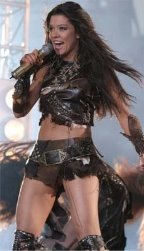 Ruslana is a Ukrainian pop-singer and songwriter, one of the best Ukrainian pop-stars. She was born in 1973 in Lviv city (Western Ukraine). Ruslana is a winner of the 2004 Eurovision Song Contest in Istanbul (Turkey).
Ruslana is a Ukrainian pop-singer and songwriter, one of the best Ukrainian pop-stars. She was born in 1973 in Lviv city (Western Ukraine). Ruslana is a winner of the 2004 Eurovision Song Contest in Istanbul (Turkey).
Here is a video of Ruslana’s “Wild Dances” ("Wild Dances" is the song-winner of 2004 Eurovision Song Contest)
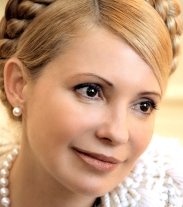
Yulia Tymoshenko (public and political figure in Ukraine, the Ukrainian prime minister in February – September 2005 and from December 2007 – March 2010. In October 11, 2011 the Court in Kiev sentenced Yulia Tymoshenko to seven years in prison).

(Анкети у додатках).Результати анкетування були проаналізовані та взяті до уваги при підготовці до презентації:
- Chervinska Antonina – a singer
-
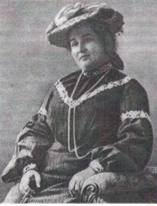 Тобілевич Софія Віталіївна (15.10.1860 – 07.10.1953). Актриса, фольклористка та письменниця, дружина І.К. Карпенка – Карого. Як актриса виступала в трупах М. Старицького, М. Садовського, грала в театрі І. Франка.
Тобілевич Софія Віталіївна (15.10.1860 – 07.10.1953). Актриса, фольклористка та письменниця, дружина І.К. Карпенка – Карого. Як актриса виступала в трупах М. Старицького, М. Садовського, грала в театрі І. Франка.
Авторка спогадів про діячів українського театру - «Корифеї українського театру» (1947), «Мої стежки і зустрічі» (1957); книги «Життя Івана Тобілевича» (1940); фольклорного збірника «Українські народні пісні в записах Софії Тобілевич» (1952).
Софії Тобілевич належать переклади українською мовою «Весілля Фігаро» П. Бомарше, «Ганнеле» Г. Гаупмана, «В липневу ніч» Б. Горчинського, «Зачароване коло» Л. Риделя.
4 (Додаток 4) 
- Barabash Svitlana – professor, literary critic, poet, member of the National Union of Writers of Ukraine (2004).
- Kupchinska Nataliia – poet
- Andrushchenko Vira – poet
-
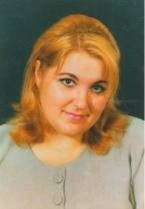 Krymska Iryna – poet Кримська Ірина Анатоліївна (20.12.1981). Поетеса. Народилася в м. Кіровограді в родині лікаря і письменника. З 1985 року мешкала в с. Трилісах Олександрівського району.
Krymska Iryna – poet Кримська Ірина Анатоліївна (20.12.1981). Поетеса. Народилася в м. Кіровограді в родині лікаря і письменника. З 1985 року мешкала в с. Трилісах Олександрівського району.
В 13 років стала наймолодшим членом обласного літературного об’єднання «Степ». Переможець першого туру Всеукраїнського конкурсу «Слово многоцінне», лауреат Всеукраїнського літературно – мистецького конкурсу «Наша земля – Україна» та міжнародних літературних конкурсів «Гранослов» (1998), імені Марусі Бек (Торонто, Канада). Пісні на її твори написав кіровоградський композитор Кім Шутенко.
Збірки поезій «Пелюстковий сніг» (1997), «Межа» (1999), «Непідкуплені дзвони» (2001), «У дощу позичу долі» (2004).
Під час презентації проекту всі ілюстрації були продемонстровані.
Можу впевнено сказати, що робота над цим проектом була захоплююча, як для учнів, так і для мене, як їхнього керівника.
Висновок уже відомий — можна ефективно навчати без комп’ютерних технологій, та чи буде це навчання творчим та інтерактивним? Чи буде це навчання давати стимул до творчого опанування предмету?
Presentation Lesson
(11 Form)
Тема: Роль жінки в суспільстві
Type of the Lesson: combined
Practical goals: ознайомити учнів із заслугами видатних жінок світу та нашої країни; активізувати лексику за темою « Роль жінки в сім’ї»; тренувати учнів у вживанні умовних речень.
Educational and developing goals: розвивати логічне мислення, комунікативну, мовну, соціокультурну компетенції учнів, уміння працювати з комп’ютером, вдосконалювати навички читання, аудіювання, письма, мовлення.
Upbringing goals:
виховувати повагу до жінки, любов до матері, почуття патріотизму.
Equipments: a textbook by L Kalinina form11, interractive board, handouts, computer, Internet
Lesson structure
- Introduction to the Lesson.
- Greeting and Aim.
T: Good morning everybody! Glad to see you in good health and mood! Today we have unusual lesson.
Ps: Glad to see you too.
- Warm – up.
T: Look at the pictures on the board and think what is the theme of our lesson.
(Pictures of famous women of the world and Ukraine)
So, the theme of our lesson is “The role of a Woman in Society”
By the end of the lesson you should answer the question: What kind of woman must be?
-
The Main Part of the Lesson.
- Discussing of the quotations
T: Now, look on the board and explaine the quotations of famous people.
Being a woman is a terribly difficult task since it consists principally in dealing with men.
Бути жінкою жахливо важке завдання, оскільки, вирішуючи її, в основному, доводиться мати справу з чоловіками.
(Conrad / Конрад)
Men make houses , women make homes .
Чоловіки будують дім , а жінки — сімейний затишок .
- Mind-up
T: What kind of woman must be?
![]()

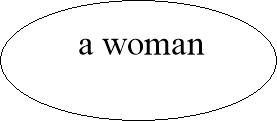
![]()
![]()


3. Reading and translation of the text exercise 11 pp. 100 – 102, (Demonstration of portraits of famous women of the world).
4. Discussing of the text:
What was Clara Barton?
Why was she on the battlefield during the Civil War?
What was Amelia Bloomer?
Where did Myra Bradwell work?
What was Mother Teresa famous for?
5. Вдосконалення навичок аудіювання.
T: I think that the most famous woman in the world is Queen Elizabeth II. Watch a video and answer the question.
a) Pre-Listening Activity
Useful words:
- overtaken - перегнала, обійшла
- longest-serving - найдовше на посту
- self-styled - самозвана
- memorabilia - пам'ятні речі
- shrine - (тут) місце вшанування особи чи інституції
- While-listening Activity
T: Watch a video
Тext:
A historic day that one of the UK's biggest royal fans has been looking forward to.
Queen Elizabeth II has now overtaken Queen Victoria as the UK'slongest-serving monarch. Victoria was on the throne for 63 years, seven months and two days.
Margaret Tyler, the self-styled "queen of royal memorabilia", has turned her house into a shrine to Britain's royals.
Each room is dedicated to a member of the family. But Queen Elizabeth has two rooms all to herself.
http://www.bbc.com/ukrainian/learning_english/2015/09/150914_le_witn_record_queen_it
- Post-Listening Activity
Revising The Second Conditional.
- Would you like to be a Queen?
7. Writing.
(Pupils write in their exercise-books)
If I were the queen, I would …
8. Reading of pupils’ sentences.
9. Snowball game.
Учні пишуть прізвища та імена п’яти відомих жінок, якими вони захоплюються на аркушах паперу, не підписуючи їх. Потім скручують їх у вигляді м’ячиків чи сніжок і кидають одне одному протягом 30 секунд. Кожен учень піднімає одну сніжку, розгортає, читає і намагається визначити автора написаного, міркуючи вголос.
10. Teacher’s speaking about our countrywoman and poetess Barabash Svitlana Grygorivna.
Barabash Svitlana Grygorivna
Svitlana Grygorivna Barabash was born in June 30, 1941 in the village of Oleksandrivka, Kirovograd region. She graduated from Olexandrivka secondary school №1 in 1958 with the golden Medal.
Then she graduated from the Faculty of Philology of Lviv National University by Franko. She worked as a journalist, teacher, taught Ukrainian literature at university of Donetsk and at the Kirovohrad Pedagogical Institute.
She defended her thesis on the work of Andrii Malyshko (1979), thesis for the degree of Doctor of Philology for the work "Creativity of Lina Kostenko in the ideological and artistic context of the era" (2004).
She was an Honored Worker of Education of Ukraine, corresponding member of International Personnel Academy, Doctor of Philology (2004), professor, literary critic, poet, member of the National Union of Writers of Ukraine (2004).
Last time she was the Head of the department of Ukrainian Kirovohrad National Technical University. She is an author of over 200 scientific papers on the history of Ukrainian literature, folklore, issues of contemporary literary and cultural process.
Separate edition of her works: "Magic source of Poetry" (1985), "The Heart is free and singing" (1989), "Kostenko poetic world", "Kostenko: Philosophy poetic art" ( 2003), "The lyrics of love of Lina Kostenko attempt to comprehend" (2003), "The poetic historiosophy of Kostenko: immortality Spirit" (2003) and others.
She died in April 28, 2007.
Декламування вірша Світлани Барабаш заздалегідь перекладеного вдома.
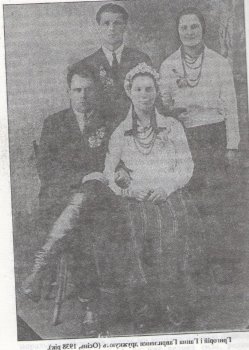
![]() Мені туди, де мама молода.
Мені туди, де мама молода.
Мені туди, де ще жива бабу ся.
Я так боюся, ой, як я боюся,
Аби не збитись з давнього сліда.
Мені туди, де Тясмин золотий,
Де кінь баский збиває дикі трави.
Де ковша й по груди ще отави,
А над степами місяць молодий.
Там материнська пісня обів’ є
І землю, й небо, й тихі оболоні.
Й мене, малу, як зернятко в долоні ..
Мені туди. Я звідти. Я там є.
I go where the young mother.
I go where no woman alive himself.
I'm afraid so, oh, I'm afraid
In order not to stray from the old track.
I go where Tyasmyn gold,
Where Basque horse knocks wild grass.
Where the bucket and the chest is Ottawa,
And over the steppes month young.
There obiv mother's song 'is
And the earth and the heaven and quiet Obolon.
And me, small as a grain of hands ..
I was there. I'm there. I'm there.
11. Checking-up Homework. (Pupils show their presentations about famous women of Ukraine).
E.g. Nina Mytrofanivna Matviyenko(Ukrainian: Ніна Митрофанівна Матвієнко), a Ukrainian singer, People's Artist of Ukraine.
Matviyenko was born on October 10, 1947 in village of Nedilytse, Yemilchyne Raion, Zhytomyr Oblast at the time in the Ukrainian SSR in the Soviet Union (today - Ukraine). She completed her studies in Ukrainian philology at the Kiev University in 1975. In 1968 she entered the vocal studio of the Ukrainian State Folk Choir named after Hryhory Veriovka and soon became a soloist. In 1988 she received the Shevchenko National Prize, a Ukrainian State prize named after Taras Shevchenko.
Her repertoire includes numerous Ukrainian folk songs. Nina is the first performer of works by the composers Yevhen Stankovych, Myroslav Skoryk, Iryna Kyrylina, Hanna Havrylets and many others. She has performed on television in numerous films and on radio.
From 1966-1991 she was a soloist of the Ukrainian State Folk Choir. From 1968 a member of the folk trio "Zoloti kliuchi". In recent times she has been performing with the Kiev camerata orchestra, and the Kostyantyn Chechenya Early Music Ensemble.
She has performed in Mexico, Canada, the United States, Czechoslovakia, Poland, Finland, Korea, France, Latin America. She has numerous recordings of Ukrainian folk songs.
Hundreds of thousands of Ukrainian folk songs form an inexhaustible source for understanding national and local history. They help perceive the dreamworld of folk oral art and imagery-rich thinking, where all this comes alive through melodies. Such harmony of text and melody as one finds in Ukrainian folk songs is an aesthetic rarity on the global scale. The fact that the people’s memory preserves such organically united lyrics and melodies and such masterpieces of folk creativity is proof of the Ukrainian people’s unique talent.
Matvienko has succeeded in sharing with people her natural gift, her keen perception of lyrics and music, and her incredible dedication, so much so that her renditions now live a life of their own; they are inseparable from the singer and many a listener will simply refuse to accept them if performed by anyone else.
This self-dedication to the Ukrainian song reaches the level of lofty sacrifice, that sweet spiritual self-crucifixion for the sake of the song that is for Nina Matvienko her cri de coeur, a confession to her beloved people, and a sea of love in which her soul luxuriates. In many of her letters, especially those addressed to Roman Didula, in her diary, in all these short stories, sketches, and observations born of pure heart, one finds breath-taking emotional saturation, sparkling eloquence, and refined style. The reason is that Matvienko is so fond of marveling at things, words, overheard dialogs, humorous situations, singling out interesting characters from the drab routine of daily life and presenting them for public judgment.
Matvienko views her mission of reviving the spirit of folk songs with a nearly religious belief in the miracle-working ability of words and tunes to charge people emotionally. She is convinced that songs can fill social sentiments with the spiritual strength of confidence in the nation, mobilize the people’s spirit for tremendous achievements, and consolidate the nation with their “volcanic force.”
What makes Matvienko such an original, inimitable singer is the way she uses her voice to master the creative matter of the text and the melody as a single, inseparable whole, reproducing it in both the words and the melody, individualizing every song by her masterful vocal improvisations.
Matvienko perceives Ukrainian songs by color, smell, and touch — as though it were a living being. She lives by songs and relishes in the song-making process, in her affinity with the song, opening for it her own soul and for the soul of the Ukrainian people after the shadows of servitude.
12. Group Work. Discussing of presentations.
T: Whose presentation was the best? Why?
T: If you had a chance what Ukrainian women would introduce in Women’s Hall of Fame?
P: Nina Matviyenko, N. Mogylevska, Svitlana Barabash, Lilia Podkopaieva…
T: I’d like to introduce you Kateryna Bilokur.
What was this woman?
P: She was a Ukrainian artist.
T: Right. She was born in village of Bohdanivka near Yahotyn…
(Presentation)
13. Conversation about mother.
T: Who is the dearest woman for you?
P: My mother.
T: Do you help your mother?
P: Yes? I do.
T: To each of us mother is the dearest person. She is near us when we are small children and she is always ready to help us when we become older.
We can remember our mother’s hands since early childhood. We felt how warm those hands were even before we learned to walk and when we still trying to say our first words. These hands took care of us day and night. So we were happy when we could pronounce the word « mummy» for the first time in our life. Mummy, мамочка, матуся… This word sounds the same kind and tender in all languages.
Now speak about your mothers.
14. Pupils’ stories about their mothers.
-
The Conclusion of the Lesson.
- Summarising.
T: So, What kind of woman must be?
Nothing can be greater for you than your mother. And if you love and respect her, if you never forget about your duty to your mother and your Motherland, you will be the happiest person. It is not by chance that people say, « He who loves his mother is a real son of his Motherland».
Dear pupils love your mothers, respect all women. Women were now allowed to vote and some women got involved in politics.
Women started to wear different clothes, they did not wear corsets any more, and they wore short dresses, even trousers.
To my mind, the role of women has changed quite a lot. I think all changes that happened in the 20th century were good, because women became to be treated more equally and it launched the processes of emancipation.
- Homework.
Exercise ІV а),в) с. 106.
T: - Do you like our lesson?
-What new information have you got in this lesson?
- What activities did you like most of all?
- What would you like to speak about at our next lesson?
Your marks are following…
Thank you for the lesson. Good – bye!
- http://www.biographyonline.net/people/famous/100-women.html
- http://ceoworld.biz/ceo/2011/11/13/top-25-ukrainian-women-celebrities-beautiful-female-celebrities-ukraine
- http://www.bbc.com/ukrainian/learning_english/2015/09/150914_le_witn_record_queen_it
- http://www.librarychl.kr.ua/pro_bib/nah_vud_referat_oblucha.php
1


про публікацію авторської розробки
Додати розробку
